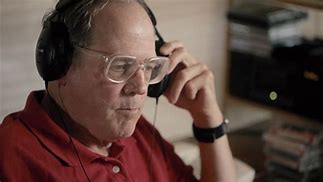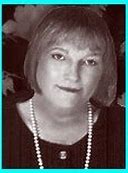by Charles Lear

When the subject of UFO databases comes up, the National UFO Reporting Center is usually mentioned along with the name of its seemingly tireless director, Peter Davenport. What many may not know is who it was that got it started.
Washington State MUFON Director Maurene Morgan wrote an article titled “The Early Years of NUFORC – Bob Gribble and Wendy Connor,” which was published in the November 2021 Washington MUFON Newsletter. According to Morgan, Bob Gribble, a Seattle Firefighter, became fascinated by UFOs in 1954 when he read an article in True magazine. This could have been the article in the May 1954 issue titled, “What Our Air Force Found Out About UFOs,” written by Edward J. Ruppelt, the first director of Project Blue Book.
According to Morgan, Gribble ordered the 1954 book, Flying Saucers on the Attack, by Harold Wilkins, which was advertised in the magazine, and then picked up Donald Keyhoe’s 1950 book Flying Saucers Are Real.
He became a believer in the extraterrestrial hypothesis and set about starting a saucer group which he named the Space Observer’s League. He put out a “Report on Interplanetary Spacecraft” called Flying Saucer Review, which is the same name as the British publication started that same year by former Royal Air Force pilot, Derek Dempster.

Gribble’s publications contain articles, some reprinted with permission from magazines such as Fate, opinion pieces, and UFO-related news. There were also sightings reports, and Vol. 1, no. 9 has a report from a young Ray Stanford, “Official Investigator & Reporter for SOL,” of the first sighting he ever had on July 10, 1954. Stanford reported a flat, circular disk flying over his home in Corpus Christi, Texas, at an estimated 150 miles per hour. He wrote that it was travelling west, stopped and hovered “for a few minutes,” and then continued. According to him, there were eleven witnesses.
By December of 1955, Gribble changed the name of the organization to Civilian Saucer Intelligence. Some readers may be aware that there was an active group at that time, formed in 1954, called Civilian Saucer Intelligence-New York that would become renowned for their scientific approach to flying saucer research.
In 1957, Gribble changed the name to the Aerial Phenomenon Research Group, which is quite similar to the Aerial Phenomena Research Organization, a group founded in 1952 by Jim and Coral Lorenzen. He put out the A.P.R.G. Reporter until 1969.
At the same time he was busy with A.P.R.G., he formed another group that he named the National Investigations Commission on Aerial Phenomena and put out the NICAP Reporter in 1962 and 1963.
The fact that Gribble’s group had the same acronym as that of Donald Keyhoe’s significantly more famous group, the National Investigations Committee on Aerial Phenomena, did not escape Keyhoe’s attention. In the very first issue of the NICAP Reporter, Gribble goes on the defensive regarding an article headlined “Erroneous Use of NICAP Name” in the August-September issue of the U.F.O. Investigator, put out by Keyhoe’s group.
It is reported in the Investigator that Gribble issued a press release erroneously announcing himself as the director of the NICAP Washington State subcommittee. In the Reporter, Gribble calls Keyhoe a “prevaricator,” criticizes the accuracy of his reporting, questions the accuracy of Keyhoe’s books and magazine articles, and offers $1000 to anyone who can produce an article where he, directly or indirectly, identified himself in the way described in the Investigator.
By 1969, Gribble seems to have burned himself out. According to Morgan in her article, Gribble had been a full-time member of the Seattle Fire Department and had a wife and five children during his time as a saucerer. In 1969 he got out of saucerology/UFOlogy and dumped all of his related archives into a landfill. His “retirement” wouldn’t last long.
In 1969, the U.S. Air Force terminated Project Blue Book. In 1973 there was a flap in the United States and Gribble saw a need for a place where people could report their encounters. In 1974, he set up what he called the National UFO Reporting Center and called sheriff’s offices and let them know they could give out his phone number to witnesses. Word spread and soon his number was at the ready at police stations, military bases, and airports. According to Morgan, the FAA told pilots to call NUFORC if they wanted to report a UFO encounter.
Gribble got others to work with him, and all of the reports over the phone were recorded on tape. If Gribble and his associates thought a case warranted it, they would do an onsite investigation. Gribble and his operation are described in a 1986 Associated Press article. According to the article, NUFORC was run out of Gribble’s “cramped but tidy office in his home.” He spent $1200 per year to keep it running and received an average of six calls per day. Even though he’d never seen a UFO himself, he told the reporter, “there’s not the slightest doubt that they’re there.”

According to Morgan, Gribble retired from active research in 1994 and turned NUFORC over to Peter Davenport. By 2004, he “was drowning in tapes and archived materials.” He was ready to pay another visit to the dump, but he got the idea, instead, to donate his materials to Albuquerque, New Mexico, based UFO historian, Wendy Connors.
Connors was the perfect person to take care of and preserve Gribble’s materials, particularly his tapes. According to Morgan, Connors spent several years in the Air Force working in communications, was interested in UFOs, and “specialized in the preservation of early historic recordings and photographs dealing with the UFO phenomena [sic] from 1947 to 1973.”
Connors collected UFO-related audio clips and compiled them into a collection she called “Faded Discs.” The collection can be accessed at archive.org. Connors took the best of the NUFORC recordings and compiled them into a 44-hour collection of 252 tracks. These can be also be accessed at archive.org. or in a more easily negotiated format with tracks of interest labeled at noufors.com. Stand out tracks include eight calls having to do with the Travis Walton case, including Travis Walton’s brother calling to report on the encounter by Travis and his co-workers while Travis was still missing.
NUFORC continues today with Peter Davenport at the helm, and with the rise of the internet came easy access for all to a comprehensive, no-nonsense database. Fortunately for historians and researchers, Gribble took a moment to pause before impulsively heading for the dump, and took a moment to come up with an original and lasting name for his organization.